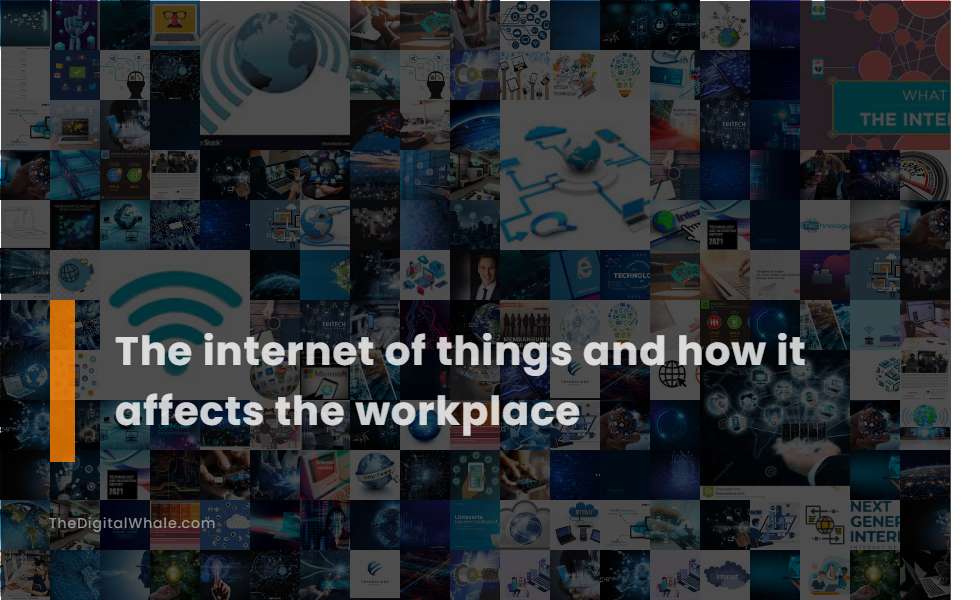The Internet of Things and How It Affects the Workplace
What are some of the potential implications of the internet of things for the workplace? What are the benefits of the 'Internet of Things'? Let's find out more about The Internet of Things and How It Affects the Workplace.

Improved Workplace Safety: Enhanced monitoring and warning systems to prevent accidents and hazards.
In today's rapidly evolving industrial environment, the Internet of Things (IoT) plays a crucial role in enhancing workplace safety. By enabling real-time monitoring of environmental conditions, IoT facilitates predictive maintenance of equipment and introduces wearable technology to monitor employee health and safety. This proactive approach significantly reduces the risk of accidents by allowing for data-driven decision-making and hazard detection. When IoT devices collect real-time data, they can provide immediate alerts and improve emergency response times, ensuring that workplaces comply with safety standards and regulations effectively. With continuous monitoring and detection of potential hazards, IoT sensors can trigger automated responses, such as safety alarms or emergency shutdowns, to secure employee well-being swiftly. For more insights on how IoT is transforming workplace safety measures, visit the Internet of Things platform, where experts discuss various applications and benefits of IoT in industrial safety.
Real-Time Data Access: Continuous flow of information for better decision-making and reduced delays.
The Internet of Things (IoT) enables real-time data streaming, allowing for the continuous and instantaneous flow of data from sensors and devices to central systems. This real-time capability is crucial for driving insights and actions, enhancing decision-making, and reducing delays in various workplace applications, including Smart Building Management, Predictive Maintenance, and Optimized Resource Utilization.
Increased Efficiency: Automation of tasks, reducing the need for human intervention in data collection and processing.
The Internet of Things (IoT) significantly increases efficiency in the workplace by automating tasks such as adjusting smart thermostats, lighting systems, and occupancy sensors, reducing energy waste and the need for human intervention in data collection and processing. IoT also streamlines workflows by connecting various systems, enabling real-time updates, and automating maintenance requests and inventory management. Discover more about how IoT is transforming office environments on the Future of IoT in Office Workspaces page.
Cost Reduction: Efficient use of resources, reduced utility costs, and lower expenses in production and transport.
Integrating IoT technology in the workplace significantly reduces costs by optimizing space usage and minimizing utility expenses through smart monitoring and control of the office environment. By dynamically reassigning desks and shutting down energy on empty floors, IoT enhances workspace management and reduces corporate real estate allocation. Moreover, the implementation of IoT practices, such as energy consumption management and device management, not only lowers rent but also optimizes facilities maintenance. This contributes to decreased overall facilities management expenses and a reduced carbon footprint. Learn more about these strategies through the insights provided by Accruent, which explores how IoT is shaping efficient and sustainable workplaces.
Higher Productivity: Improved internal processes, better task management, and enhanced employee performance.
The Internet of Things (IoT) enhances workplace productivity by automating repetitive tasks, optimizing workflows, and improving communication and collaboration among employees, leading to an uninterrupted and efficient workflow. IoT technology streamlines internal processes by monitoring and managing office requests, maintaining equipment, and optimizing space usage, which frees up time for other responsibilities and ensures issues are resolved promptly, thereby boosting overall productivity. Additionally, IoT devices improve employee productivity by reducing unplanned downtime through predictive maintenance, optimizing employee comfort with smart thermostats and other devices, and streamlining trivial tasks, resulting in a more efficient and comfortable work environment.
Related:
What are the benefits of using technology in the workplace? What are some ways Smart Technology can improve the workplace? Let's find out more about The Best Way To Use Technology In the Workplace.
Enhanced Collaboration: Advanced tools for teamwork, including telepresence robots and smart communication systems.
The Internet of Things (IoT) is significantly enhancing collaboration in today's workplace through advanced tools like telepresence robots, smart communication systems, and IoT-powered devices. These cutting-edge technologies facilitate seamless interactions across multiple devices and platforms, promoting real-time collaboration and bolstering the efficiency of teamwork, particularly in hybrid work environments. One of the forefront aspects of this revolution is the emergence of Telepresence Robots, which are redefining teamwork by enabling active participation in meetings and real-time interactions. These robots effectively break down physical barriers and foster a sense of unity among remote and on-site team members, enhancing overall collaboration and connectivity in the workforce. IoT technologies, including high-end telepresence robots and smart voice-enabled speakers, are paving the way for automated and optimized office spaces, ultimately leading to a more collaborative and productive work environment.
Predictive Maintenance: Early detection of potential machine failures and degradation through IoT sensors and machine learning.
IoT Predictive Maintenance employs sensors embedded in machines to collect data on vital metrics such as temperature, vibration, and energy consumption. This data is subsequently analyzed by machine learning algorithms to anticipate potential equipment failures. By enabling proactive maintenance, this approach effectively reduces downtime and associated costs. For further insights into this technology, explore more on the Xyte website.
Better Employee Engagement: New working methods, increased motivation, and improved interactions through IoT technologies.
The integration of IoT in the workplace enhances employee engagement by catering to individual preferences, boosting satisfaction, and improving interactions through technologies like augmented reality, telepresence robots, and smart building systems that create a comfortable and efficient work environment. In the field of HR, IoT technologies such as wearable devices and intelligent sensors help in monitoring and analyzing employee behavior. This leads to tailored individualized experiences, increased job satisfaction, and higher engagement levels. Notable examples from companies like Amazon, GE, and Siemens demonstrate the effectiveness of these technologies. For more insights on how IoT impacts workplace productivity and employee engagement, you can explore further on IoT Technologies in HR.
Autonomous Networks: Seamless integration of sensors, cameras, and other devices with building systems for a flexible work environment.
Autonomous networks in the workplace, enabled by IoT, allow sensors, cameras, and other devices to connect directly with building systems, creating a flexible and efficient work environment where employees can interact with workplace systems seamlessly, whether they are on the go or in the office. This integration reduces distractions and enhances overall productivity. For more insights on these advancements, you can explore this IoT in the Workplace guide by Intuz, which delves into the benefits, impacts, and applications of IoT in modern workplaces.
Energy and Resource Optimization: Automated climate control, lighting, and other systems to reduce energy consumption and costs.
The Internet of Things (IoT) in the workplace significantly optimizes energy and resource usage by automating systems such as lighting, HVAC, and thermostats. This automation is key to reducing both energy consumption and operational costs. By enabling real-time tracking and analysis, IoT helps identify inefficiencies and ultimately lowers energy bills. Moreover, IoT technology enhances workplace efficiency and sustainability by using sensors and devices to monitor and control the environment effectively. It optimizes energy use, reduces waste, and improves resource efficiency by automatically adjusting factors like lighting and heating in real-time, which not only saves energy but also reduces the overall carbon footprint.
Related:
What are the pros and cons of telecommuting? What are the future trends in remote work? Let's find out more about The Future of Work: Telecommuting and Other Changes.
